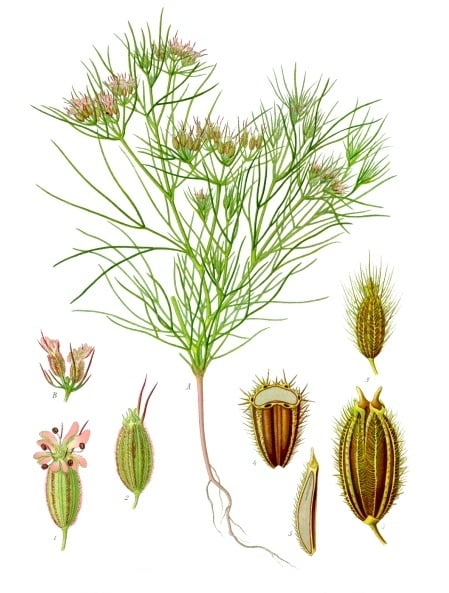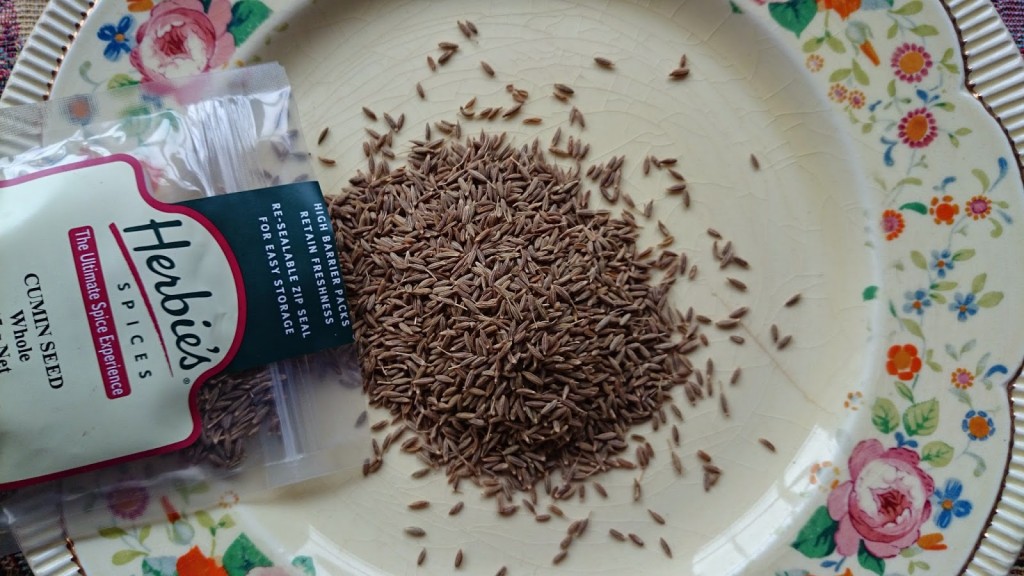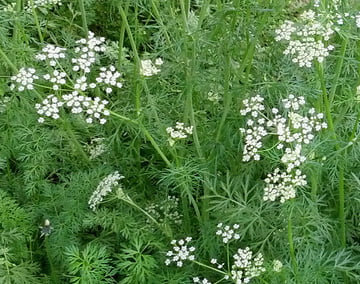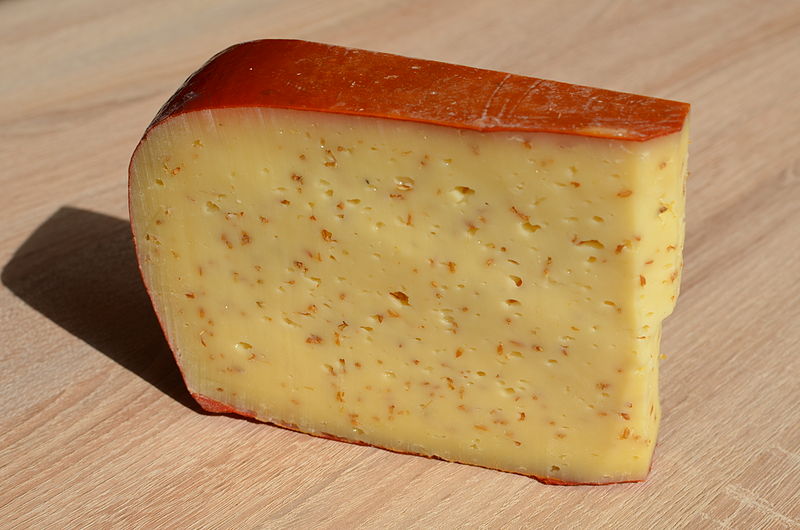Cumin is the popular seed spice that you find in Indian curries but it is also used widely in Egyptian, Mexican and Moroccan cuisine. If your area has warm, dry summers then you can grow your own cumin and collect the seed to grind fresh for your own cooking. I chatted with Ian Hemphill of Herbies about how to grow your own cumin.

Cumin Photo Sanjay Acharya
Cumin, called Jeera/Jira ( जीरा ) in India, is a key ingredient in Jeera Aloo, cumin potatoes, and also Egyptian dukkah, the delicious spice mix into which you dip your bread. This mix is usually made from seeds of cumin, coriander and sesame as well as almonds or hazelnuts and sumac but there are other variations. Cumin has been grown and used since very ancient times, including by the Ancient Egyptians. Rice flavoured with cumin seed is a popular Indian dish and over 60% of the word’s cumin is used in India.
Cumin, botanically Cuminum cyminum, is a summer annual plant in the parsley family from the Middle East, northern Africa and northern India. Its small, 5mm long (¼ inch) boat-shaped, ribbed seeds are widely available from grocery stores and supermarkets, and also as a pre-ground powder. It has a warm and spicy but slightly bitter taste and is often combined with ground coriander, cardamom and tumeric. It’s often confused with caraway seed, as it is closely related and looks very similar.
 Cumin grows best in full sun, and a well-drained position in a warm climate garden and matures within only a few months when grown from seed. You can also grow it in pots. With wispy green foliage rather like dill, and umbels (rounded heads) of tiny white flowers, cumin grows quickly during hot, dry summers. Although it can grow to about 30cm (12 inches) high, its stems are quite thin and weak so it often flops about and appears smaller.
Cumin grows best in full sun, and a well-drained position in a warm climate garden and matures within only a few months when grown from seed. You can also grow it in pots. With wispy green foliage rather like dill, and umbels (rounded heads) of tiny white flowers, cumin grows quickly during hot, dry summers. Although it can grow to about 30cm (12 inches) high, its stems are quite thin and weak so it often flops about and appears smaller.

Herbies spices Cumin seeds
Cumin is not often sold in nurseries or grown in the home garden, perhaps as it’s grown for its seed, rather than its foliage, even though you can eat the leaves, which have a light, tangy flavour in summer salads. However cumin is one of those spices that does not keep well, especially when ground, so grinding it fresh will make a big difference to the flavour released in cooking.

Cuminum cyminum
Growing cumin: Cumin grows and sets seed in only 3-4 months when grown from seed and prefers temperatures around 25-30 degrees C (75-85ºF) and low humidity. Areas where wheat grows well will have a suitable climate for cumin. In more humid climates it’s very susceptible to fungal diseases like Fusarium wilt and powdery mildew. In warm climates, sow seed in mid spring, however if you’re in a cold area with a short growing season, you’ll need to start your cumin seeds inside for the first month as they’re very susceptible to frost damage.
The seed pods are ready to harvest in autumn/fall and you will want to collect them quickly before any of the local wildlife develop a taste for them or the pods split open and you lose the seeds. Pick the pods, let them dry inside a paper bag and then rub them open to expose the seeds. Laying the seeds out on a screen to dry in the open will help clean your cumin seed, as the lightweight chaff is blown off.

Leydon Cheese Photo AlexanderVanLoon
Other places where you may find cumin is in Egyptian sweet shortbread biscuits, Dutch Leyden cheese and in pickling, such as chutney, sauerkraut and relish. It goes beautifully with all vegetables, (especially in a beetroot and feta salad) and is a good balance for creamy dishes.
